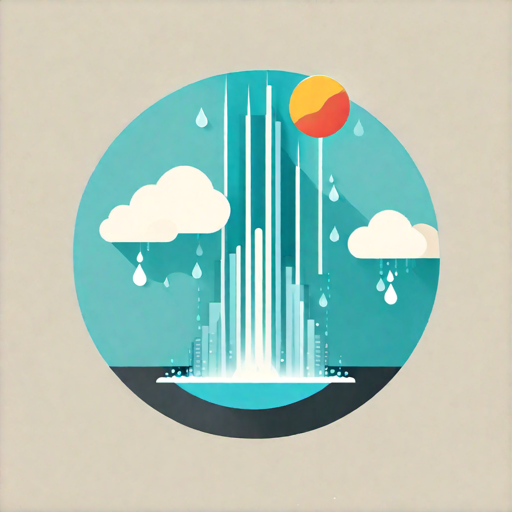
Air Quality Focus: Delhi’s Rain Experiment
Recommended for Middle Grades
In Delhi, a busy city full of history and new developments, there’s a big problem – the air is getting dirtier. The air is so full of pollution that the government is looking for new ways to clean it. This article discusses Delhi’s plan to tackle pollution with artificial rain.
Led by Environment Minister Gopal Rai, it combines technology and strategy to address environmental issues.
Listen to the news
Key Facts
- Delhi plans to implement artificial rain through cloud seeding, a technique that involves introducing substances into clouds to induce rain. This ambitious project, backed by expert advice from IIT Kanpur, aims to improve the air quality by settling airborne pollutants.
- The Delhi government, led by Aam Aadmi Party (AAP), is also considering implementing a vehicle rationing scheme, known as the odd-even scheme. This strategy limits vehicle usage based on the last digit of their registration numbers on alternate days, aiming to reduce vehicular emissions.
- The plans for making artificial rain and limiting car use are waiting for the Supreme Court’s approval. The government is working with experts and waiting for the right weather to start cloud seeding.
Pollution Solutions
- Equipment and Readiness: Essential equipment for cloud seeding is in place, including an aircraft and cloud seeding apparatus. IIT Kanpur’s involvement ensures that the project is guided by scientific expertise and precision.
- Evaluation of the Odd-Even Scheme: Research from the University of Chicago and Delhi Technical University is being checked to see how well the odd-even car rule works. This rule works differently depending on other things that cause pollution. For example, if there’s a lot of smoke from factories, the rule might not reduce pollution as much as when the air is cleaner from other sources.
- Current Air Quality: Recently, Delhi’s air quality has gotten much worse, now labeled as ‘severe’. This bad air shows why we urgently need solutions like artificial rain and cutting down traffic.
Connecting Ideas
- Artificial Rain and Cloud Seeding: In this method, we put things like silver iodide or salt into clouds to make it rain. People all over the world use this to get more water and reduce pollution.
- Air Quality Index (AQI): AQI tells us how dirty the air is now or how dirty it might get soon. If the AQI number is high, it means the air is more polluted and can be more harmful to our health.
- Odd-Even Scheme: A traffic rationing measure where vehicles are allowed on the roads on alternate days, depending on the last digit of their license plate. It aims to reduce vehicular pollution.
Final Thoughts
In conclusion, Delhi is actively trying artificial rain and a car-use limit to fight air pollution. Awaiting the Supreme Court’s nod, these steps show the government’s dedication to cleaner air. If successful, other cities facing similar pollution issues might follow this example.
Advice for Children and Experiments
Children, as future custodians of our planet, can play a crucial role in understanding and addressing environmental issues. Here are some ways they can engage with the topic of air quality and artificial rain:
- Educational Activities: Firstly, learn about air pollution, its sources, and impacts. Secondly, grasping the basics of AQI is essential. Additionally, recognizing how everyday activities contribute to air pollution is crucial.
- Kids can conduct simple experiments to grasp air quality. For instance, they can hang a white sheet outside for a day to capture particulate matter or observe changes in plant leaves in different areas to assess pollution levels
- Participating in science fairs with projects related to air quality, pollution, and environmental solutions like artificial rain can be both educational and inspiring.
- Children can be powerful advocates for cleaner air. For example, they can engage in community awareness programs, school presentations, and environmental clubs to spread knowledge and encourage collective action.
By educating themselves and participating in these activities, children can develop a deeper understanding of environmental issues and contribute to a cleaner, healthier future.
Similar Stories
![]()
Curious Times is a leading newspaper and website for kids. We publish daily global news aligned to your learning levels (also as per NEP 2020): Foundational, Preparatory (Primary), Middle and Senior. So, check out the News tab for this. We bring kids’ favourite Curious Times Weekly newspaper every weekend with top news, feature stories and kids’ contributions. Check out daily JokesPoke, Tongue Twisters, Word of the Day and Quote of the Day, kids need it all the time.
ME – My Expressions at Curious Times is your place to get your work published, building your quality digital footprint. And it is a good way to share your talent and skills with your friends, family, school, teachers and the world. Thus, as you will step into higher educational institutes your published content will showcase your strength.
Events, Quizzes and Competitions bring students from over 5,000 schools globally to participate in the 21st-Century themes. Here schools and students win certificates, prizes and recognition through these global events.
Sign-up for your school for FREE!
Communicate with us: WhatsApp, Instagram, Facebook, Youtube, Twitter, and LinkedIn.
0 (Please login to give a Curious Clap to your friend.)
